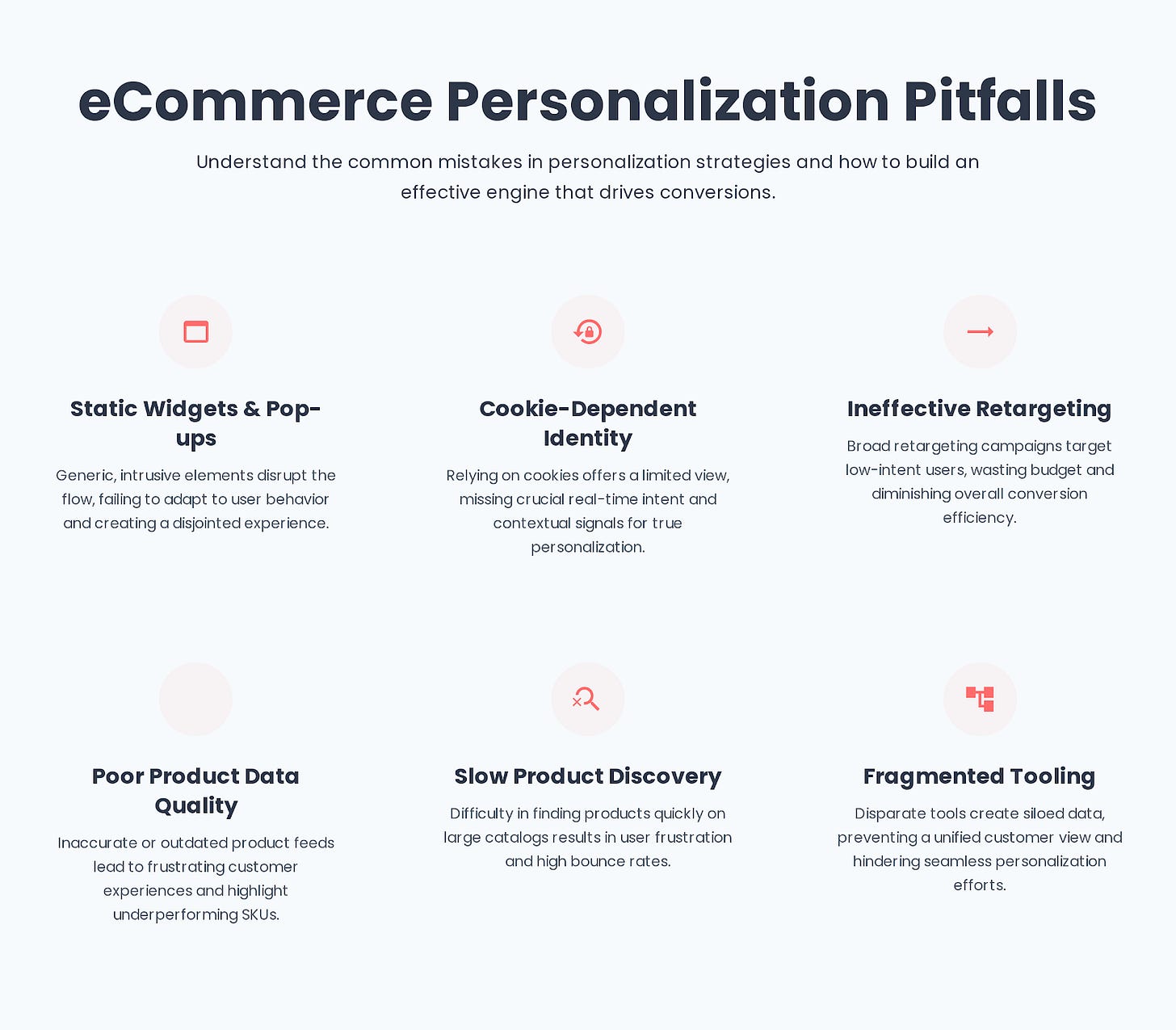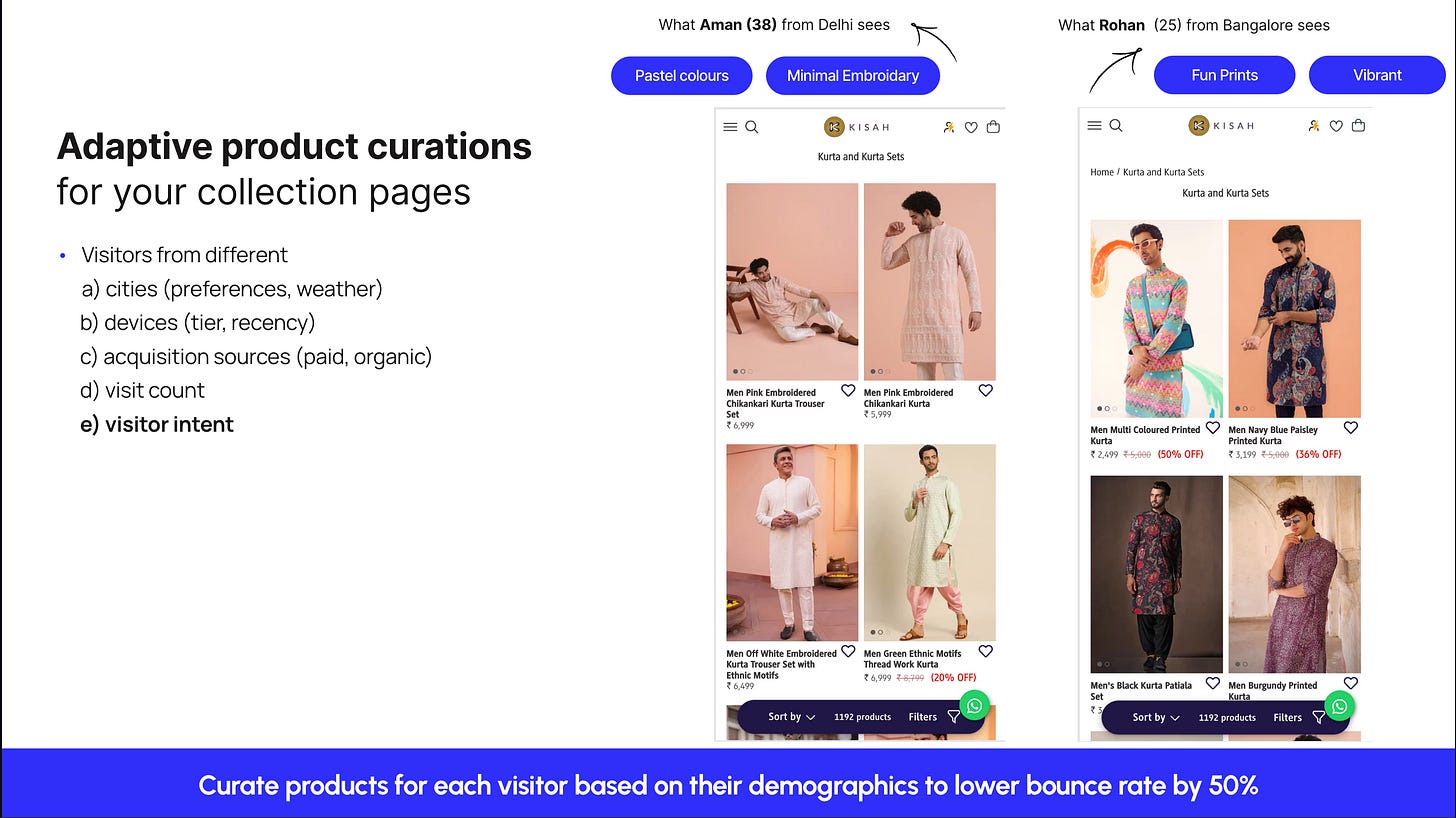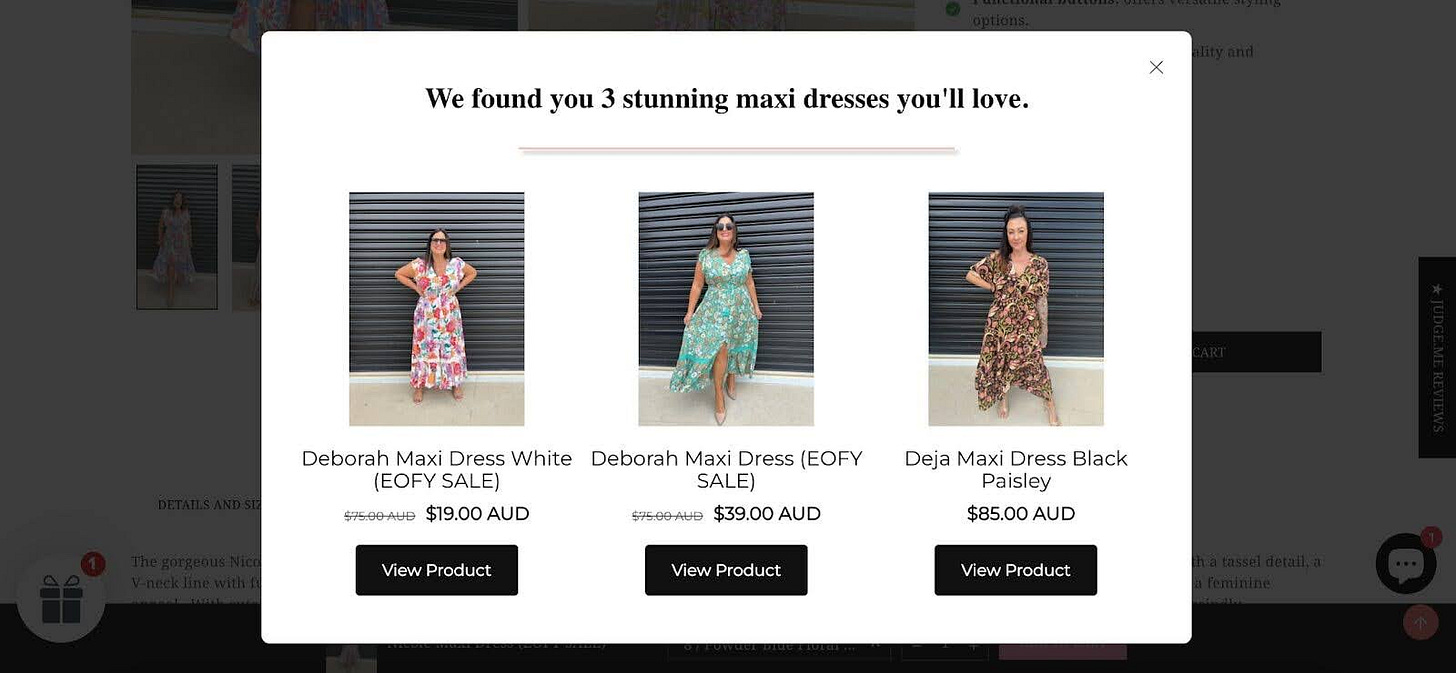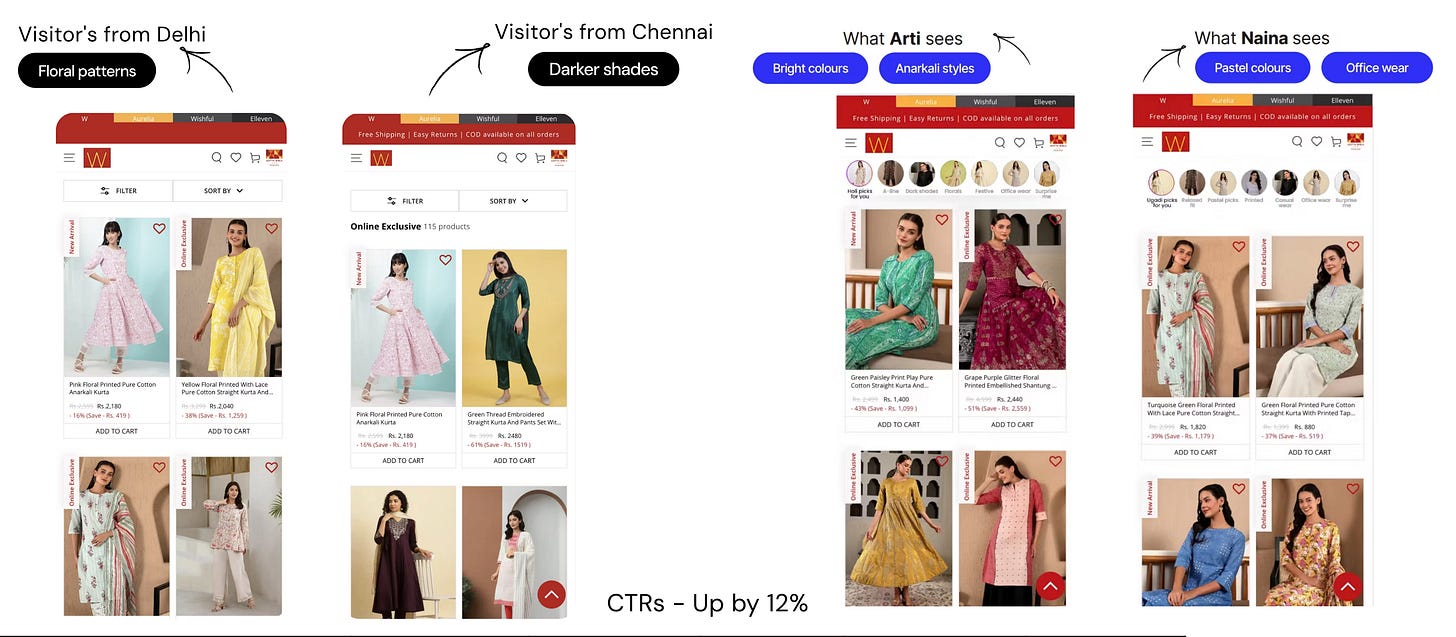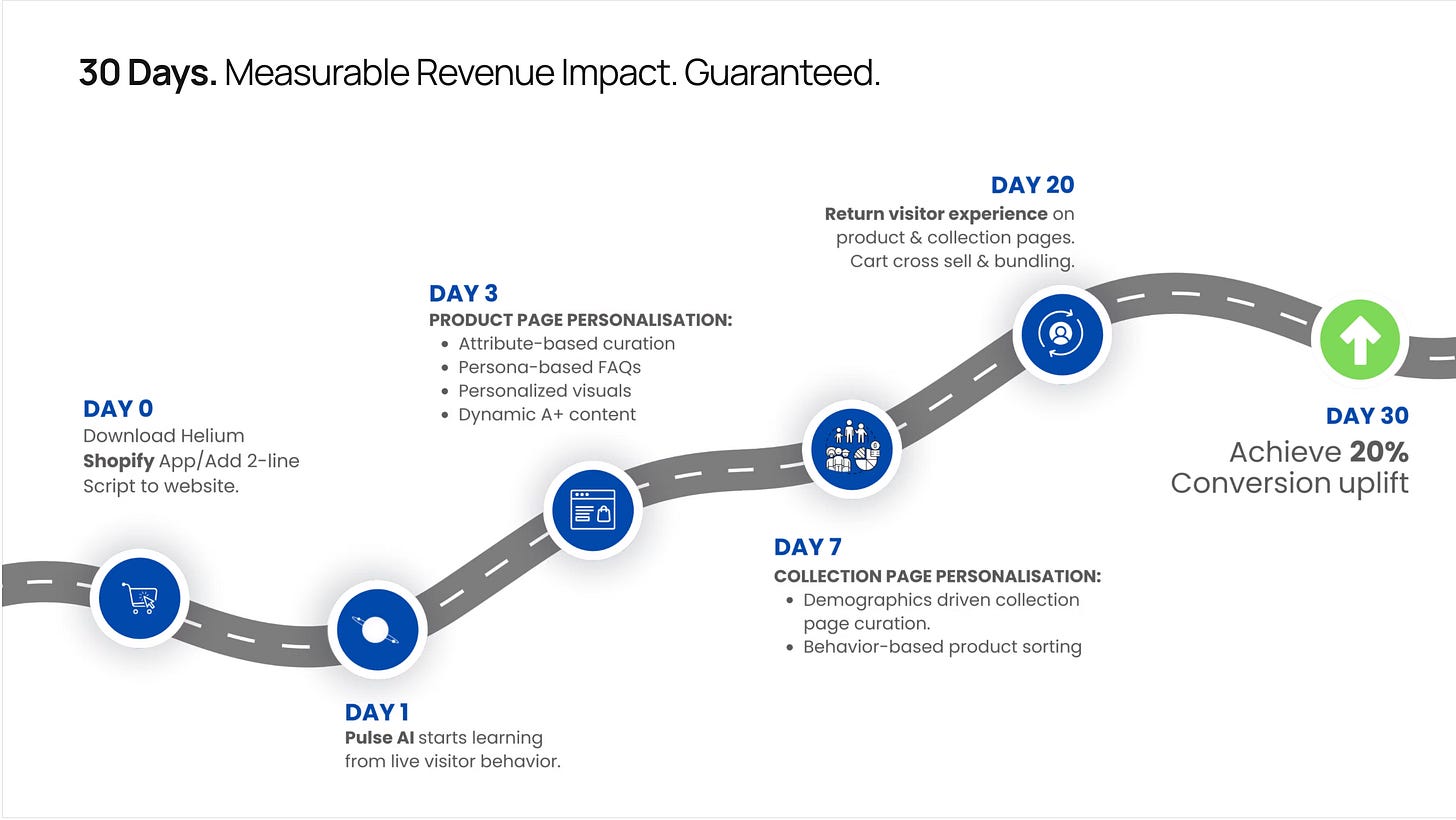Why Traditional eCommerce Personalisation Fails (And How Session-Level AI Fixes It)
Most ecommerce personalisation feels generic. Learn why it fails, and how session-level AI drives higher conversions, AOV, and retention.
If you work in ecommerce, you’ve heard the same promise for years: “personalization will lift conversions.” You’ve probably bought the tools, added the widgets, and launched the campaigns. And yet—the numbers barely move.
Consumers notice the gap too. 77% expect brands to personalize their journey, but most feel underwhelmed by what they actually get. Even worse, 63% abandon sites altogether when the experience feels off. That’s not just bad UX, but also lost revenue you never get back.
The truth is, what most platforms call “personalization” isn’t really personal. It’s the same carousel of “related products,” the same retargeting ads chasing window shoppers, the same static collection pages for every visitor; no matter who they are or what they came to buy.
This piece breaks down why traditional personalization strategies keep failing—and how session-level AI fixes the gaps with real-time context, decision clarity, and measurable impact.
You don’t lose conversions because shoppers don’t want personalization. You lose them because most systems are built on weak signals, stale data, and disconnected tools. Here’s where the cracks show up:
Static widgets and pop-ups
Most brands still rely on banners, carousels, and exit pop-ups as their “personalization.” These don’t change with the session, so every visitor sees the same message. Worse, multiple pop-ups slow down page load, and a one-second delay can drop conversions by up to 7%. What you call personalization feels like spam to the shopper.
Dirty product feeds
If your feed pushes out-of-stock or mispriced products into collection pages or ad sets, you’re wasting money. Each irrelevant SKU erodes trust and inflates bounce rates. Bad feeds also flow into Meta and Google campaigns, so you pay to promote items that can’t sell. A strong ecommerce personalization platform starts by cleaning product feeds before any optimization.
Cookie-based identity misses real intent
Cookies track history, not live context. A shopper who browsed sneakers last week may be here for office wear today, yet the system will still push sneakers. With third-party cookies collapsing, this gap grows wider. To build a truly personalized ecommerce experience, you need session-level signals instead of recycled guesses.
Slow discovery in large catalogs
If you run a 5,000-SKU catalog, you have less than 8 seconds to surface a relevant product. Static recommenders don’t account for factors like size availability, price comfort, or seasonality. That makes discovery feel like work, and high-intent shoppers bounce before ever reaching a PDP. Smarter ecommerce product customization fixes this by adapting results dynamically.
Retargeting wasted on low-intent traffic
Most retargeting lists are built on pageviews. That means you spend heavily chasing visitors who clicked on a product but had no purchase intent. Without quality-weighted sessions—signals like cart recovery, variant toggles, or reviews—you’re putting budget into ads that can never convert.
Siloed tools and disconnected insights
Your search tool, recommendation engine, feed optimizer, and analytics often don’t talk to each other. One tool says a SKU is “high-performing,” another shows it drives exits—and you’re left guessing. When data is fragmented, ecommerce personalisation becomes cosmetic. This is the same flaw that holds back the traditional retail business model: decisions are disconnected from outcomes.
Broken personalization: The common pitfalls brands overlook
The problems don’t stop with static widgets or dirty feeds. Even when brands invest in advanced tools, most strategies still break down in less obvious but equally damaging ways:
Personalization ends at the PDP: Most ecommerce website personalization efforts stop once a shopper reaches a product page. Collection pages, search results, and ad feeds remain static. This means low-relevance products are shown at the very top of the funnel, while a “personalized” PDP is left trying to rescue an already broken journey.
Generic recommendations: “You may also like” sections are rarely contextual. They show the same items to everyone instead of adapting to price, comfort, stock availability, or intent. That space could drive real ecommerce product customization or surface complementary items, but instead, it delivers irrelevant noise.
Dashboards without decisions: Most platforms deliver traffic graphs, CTRs, and bounce rates, but stop short of linking them to revenue. Teams see the what but not the why. Without clear attribution, you can’t convert reports into a truly personalized ecommerce experience that moves business metrics.
Experiments that don’t replicate: A/B tests often show temporary wins, but because they’re run without context (SKU availability, variant order, page speed), the results don’t hold when scaled. What looks like a success in one test becomes noise in practice.
How session-level AI transforms ecommerce personalization
Brands that still rely on a traditional retail business model or surface-level personalization will keep hitting the same wall. Without context-aware decisions across the full funnel, even the best tools deliver cosmetic changes instead of meaningful growth.
Session-level AI uses live shopper signals, not stale data, to shape the journey in real time. Here’s what changes when you move from static to session-level:
Real-time context awareness
You don’t need to wait for historical cohorts. The system reads 20+ live signals the second a shopper lands—geo, device, local time, acquisition source, browsing speed, and even review dwell.
That context lets you adapt instantly: festive shoppers in Jaipur see bright Anarkalis at the top of the grid, while weekday office-goers in Delhi see lighter workwear. Instead of showing everyone the same “new arrivals,” you tailor the very first rows to session context.
Our suggestion: Audit which signals you’re currently ignoring (e.g., time of day, device class, regional seasonality). Layer these into merchandising rules so product ordering reacts in-session, not next week.
Decision clarity at every step
Most drop-offs happen because basic information is buried. If the right variant isn’t pre-selected or delivery isn’t clear, shoppers hesitate and bounce.
Session-level AI removes friction: it auto-selects the most likely-to-buy variant, surfaces delivery timelines and returns next to the CTA, and reorders PDP evidence blocks to match decision priority.
Our suggestion: Map the top three friction points on your PDPs (variant confusion, shipping opacity, return anxiety). Use AI rules to surface these elements before the shopper asks.
Clean product feeds and smarter retargeting
A messy and complex feed kills ROI long before a shopper reaches checkout. Out-of-stock, mispriced, or low-converting SKUs slip into collection pages and ad campaigns, wasting budget.
Session-level AI cleans feeds in real time, suppressing sink SKUs and prioritizing high-margin, high-conversion products. Retargeting lists shift from “all pageviews” to quality-weighted sessions: shoppers who showed purchase intent through behaviors like cart recovery or variant toggles.
Our suggestion: Run a feed hygiene sprint. Track how many of your active SKUs in Meta/Google ads are out-of-stock or low-converting. Suppress them, then redirect the budget to proven winners.
Adaptive merchandising on collection pages
Static collection pages force every shopper through the same path, no matter their intent. With session-level AI, category rows reshuffle dynamically by city, device, and live browsing signals, so the most relevant products appear first.
For example, W for Woman, a woman’s ethnic wear brand, saw a 12% lift in click-through on category pages and a 9% overall lift during the pilot when adaptive ordering went live.
Our suggestion: Start with one high-traffic collection. Run a two-week holdout to compare static vs. adaptive ordering, and track CTR into PDP as your lead metric—it shifts before overall CVR does.
Always-on anomaly detection and fixes
Static systems don’t notice when personalization backfires. If page load times spike or a particular stock sells out, you only catch it in next week’s dashboard.
Session-level AI flags anomalies in real time (SKU × device × geo) and applies fixes immediately: suppressing OOS variants, compressing slow-loading images, or reordering evidence density. This means that you don’t lose a full day of revenue waiting for reports.
Our suggestion: Define which anomalies hurt you most (latency, OOS, pricing errors). Configure alerts and automated fixes so the site adapts mid-session, not post-mortem.
A practical roadmap: How to fix personalisation in 60 days
You don’t need a six-month replatform to fix personalization. In eight weeks, you can rebuild the core of your system around session-level signals and see measurable lifts:
Weeks 0–2: Wire Pulse, clean the feed, set guardrails
Connect Pulse to start capturing unsampled session data. Run a feed hygiene sprint: suppress out-of-stock, mispriced, or slow-ship SKUs before they reach shoppers or ad platforms.
Define guardrails early—holdouts for measurement, rollback rules if a change backfires, and privacy defaults for IDs. This is the foundation for every downstream improvement.
Weeks 3–4: Deploy decision clarity on-site
Fix the choices that matter most: auto-select the variant most likely to convert, reorder collection pages so in-stock, high-converting SKUs appear first, and surface delivery and returns at the point of decision. These changes reduce hesitation and move more visitors to add-to-cart without adding new widgets.
Weeks 5–6: Sync with Meta and Google for quality retargeting
Push cleaned product feeds and session-quality signals into Meta and Google. Stop wasting spend on low-yield SKUs and window shoppers. Retarget based on high-intent actions like review dwell, variant toggles, or cart recovery instead of raw pageviews. This shift protects ROAS and directs spend toward sessions with a real chance of converting.
Weeks 7–8: Add contextual Gen-AI layers
Once the basics are solid, use Gen-AI for controlled micro-variants: seasonal copy on banners, badges tied to real stock signals (“only 2 left in M”), or regional tweaks in first-fold messaging. Keep every change within pre-set guardrails and validate impact against holdouts so you scale only what moves revenue.
Conclusion: Moving from broken personalization to AI-driven growth
Most e-commerce personalisation efforts stop at cosmetic tweaks: generic pop-ups, static feeds, and retargeting that wastes budget. They don’t reflect shopper intent in the moment, and that’s why conversions stall.
Session-level AI changes that. By adapting decisions in real time (variant order, collection ranking, product feeds, and PDP clarity), it creates a personalised ecommerce experience that feels relevant to every shopper.
Want to move past a traditional retail business model and build an ecommerce website personalization strategy that works? Book a demo with Helium Pulse and see session-level AI in action.


